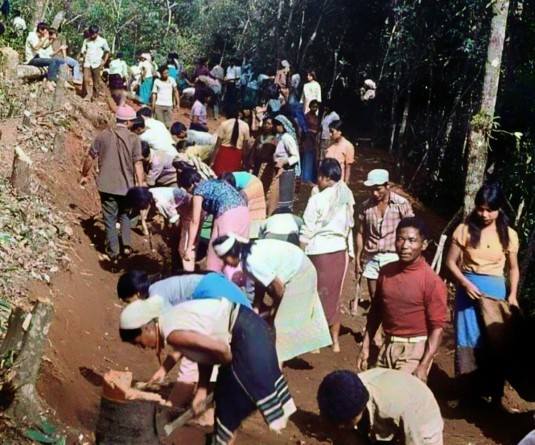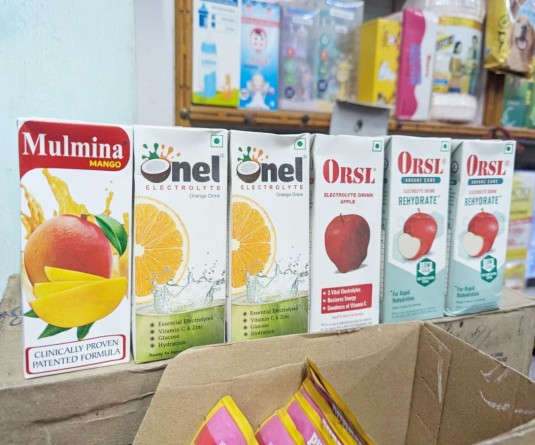A view of GMS Longpayimsen where the school's agarwood plantation has evolved into a unique sustainable development model for school development.

Why GMS Longpayimsen’s agarwood project is a model for sustainable school development
Imti Longchar
Longpayimsen | November 28
In an era when most government schools struggle with limited resources, Government Middle School (GMS) Longpayimsen under EBRC Watiyim, Mokokchung district has carved out a remarkable path of its own- by cultivating agarwood.
Its unique agarwood plantation venture, which began nearly two decades ago, has evolved into a sustainable model for school development, student engagement and financial self-reliance—showcasing how grassroots innovation can redefine the prospect of government schools.
The idea took shape in 2008, when the School Education Department directed all government schools to form and maintain Eco Clubs. While most schools planted flowering shrubs or small shade trees, the teachers and the School Management Committee (SMC) at GMS Longpayimsen decided to think differently. They identified agarwood, a high-value species suited to the region, as a long-term investment that could benefit the school, which being in a remote area, faced delays in receiving developmental facilities during these times.
“It began as a small Eco Club activity,” recalled Head Teacher Asemba Jamir. “But the school faculty realised early on that agarwood could create a sustainable source of income for the school if we nurtured it properly.”
.webp)
Since then, the school has periodically harvested matured agarwood trees, using the proceeds exclusively for school improvement. The most recent harvest was completed this year, marking the end of the first phase of the project and laying the foundation for a larger expansion.
Over the years, the initiative has supported classroom upgrades, including the installation of fans and lights, improved computer facilities, the purchase of printers and enhancement of internet connectivity. During times of teacher shortages, the revenue also enabled the school to pay salaries for locally engaged teachers to prevent disruptions in learning. The funds additionally supported the school’s Golden Jubilee celebration and renovation works in 2024.
.webp)
Another cherished outcome of the project is the fully funded annual excursion for Class 8 students, a rare opportunity for rural government schoolchildren. “The students look forward to it every year. It’s a reward that comes from their own effort and involvement,” Jamir said in an interaction with The Morung Express.
As part of co-curricular activities, students engage in monthly maintenance of the plantation-- weeding, clearing the base and observing tree growth. “This routine teaches discipline, responsibility and the value of nurturing something over time,” the Head Teacher added.
.webp)
The community’s involvement has been another key pillar. Villagers contribute to maintenance, offer support during plantation drives. The strong survival rate of the first phase of trees and the encouraging feedback from stakeholders have motivated the school to adopt an even larger vision.
With the matured trees now harvested, the school plans to revive and enlarge the project by planting more saplings next year. For 2026, the target is ambitious — the planting of approximately 1,000 agarwood saplings, with each student contributing four seedlings. Teachers and community members will jointly take part in the drive.
.webp)
“Our long-term goal is to generate enough resources for major school development initiatives, including the construction of an assembly hall,” Jamir said.
Founded in 1974, GMS Longpayimsen currently has 140 students, 75 boys and 65 girls, supported by 13 teachers handling Classes A to 8. The school’s agarwood journey is regarded as a valuable example for institutions seeking sustainable, community-driven ways to enhance education.
.webp)
Also speaking to The Morung Express, Chubarenla, Coordinator, Educational Block Resource Centre (EBRC) Watiyim noted that while agarwood is well-suited to the local climate and soil at Longpayimsen, emphasised that the main principle lies in leveraging region-specific natural resources for sustainable development.
“Not every area can grow agarwood, but every region has its own unique agroforestry or cultivation opportunities,” said Chubarenla. “The key is for schools to identify and nurture plants or crops that can generate long-term income while involving students and communities in their care.”





.jpg)
